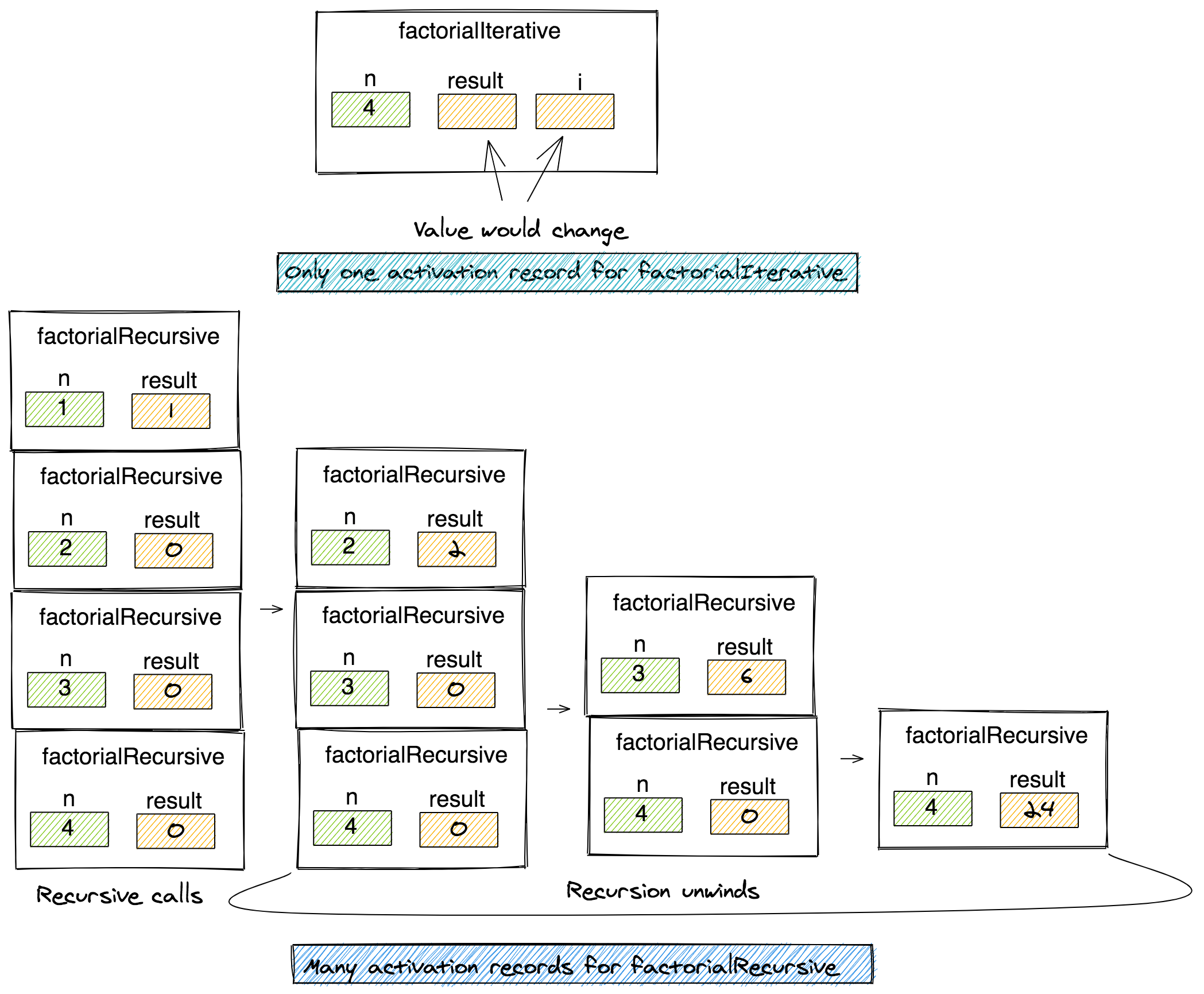Working of Factorial: Iterative vs. Recursive Case
Look at the diagrams below to see the "behind the scenes" portion of the activation stack for both the iterative and recursive cases:

The most important thing to note is that the iterative version has only one function record on the activation stack. For the recursive cases, there are 4 records of the function on the activation stack until the recursion starts to unwind.
So imagine what would happen if you were to call factorial for a larger number like 10 or 20. So many records on the activation stack is a strain on the system's memory! There is also the extra overhead of function calling, saving its state, and maintaining the activation stack.
If you are using a programming language like C++ or Java, then go for the iterative solution as it would run in constant memory.

